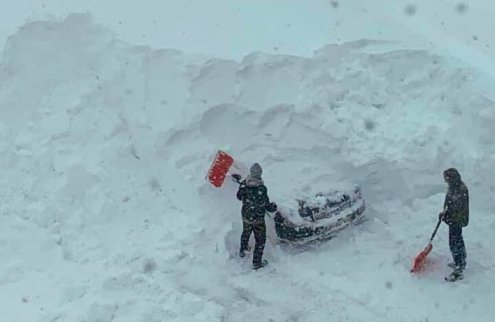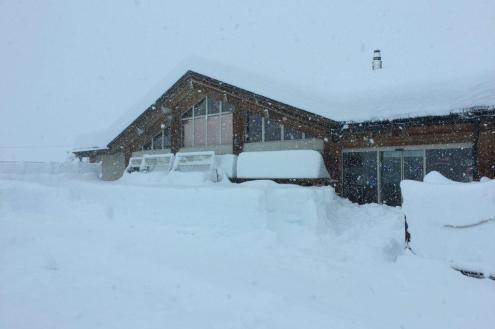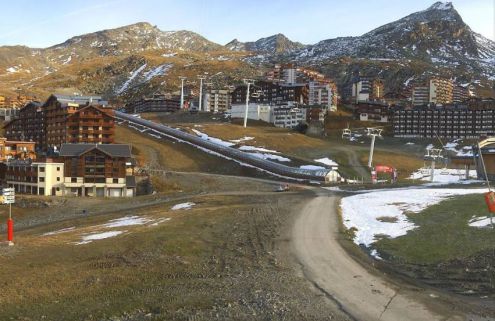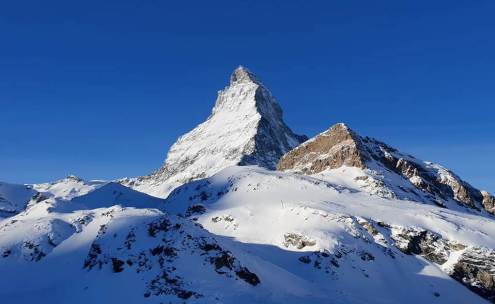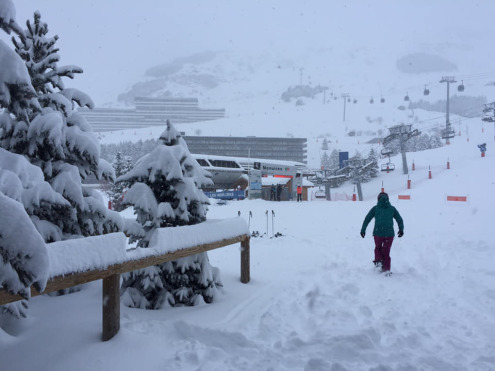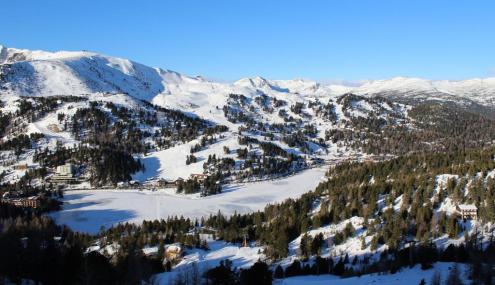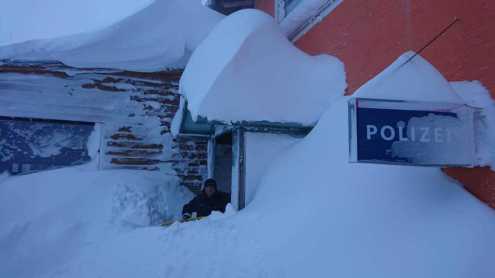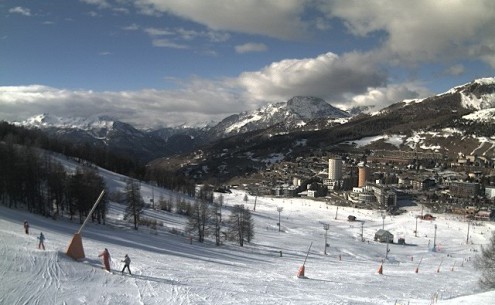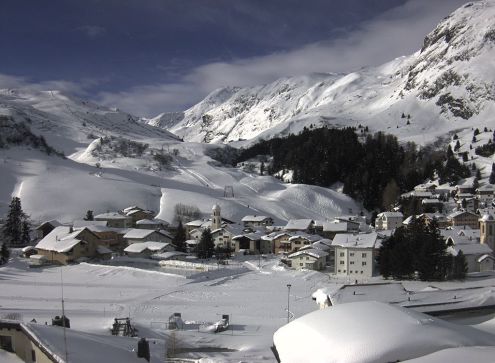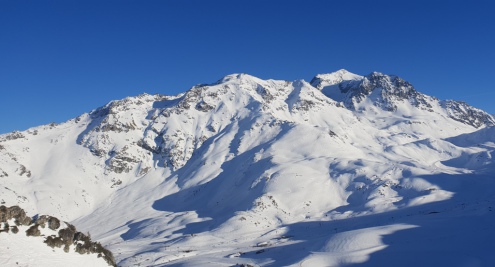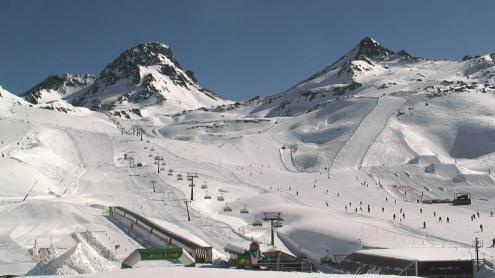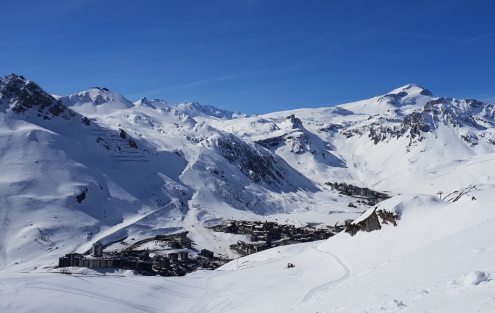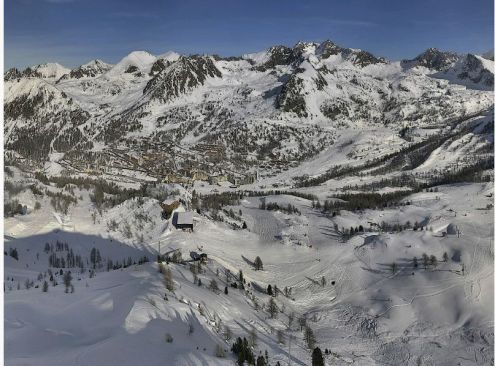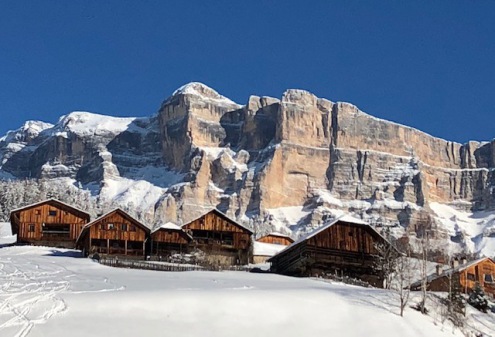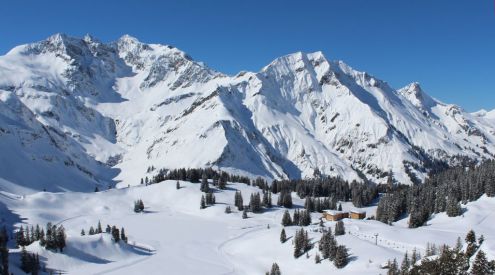Who got the most snow in the Alps in 2018-19?
by Fraser Wilkin, 16 July 2019
2018-19 was a pretty decent season for the Alps, all things considered, even if there were large variations in snowfall and snow depths from place to place and from time to time.
In keeping with recent years, 2018-19 was another mild winter, with temperatures above average across the board. On the whole, the northern Alps saw more snow than the southern Alps, with some truly historic early January snowfalls and depths in the north-eastern Alps (i.e. Austria, excluding the far southern provinces of Osttirol and Carinthia, and the central and eastern Swiss Alps from about Engelberg eastwards).
However, with the truly extreme snowfalls concentrated in the first half of January, few places (if any) could consider the season, as a whole, to have been an exceptionally snowy one.
A retrospective of the 2018-19 season
After a torrid summer, the weather in the Alps was relatively uneventful during early autumn with the best of the glacier skiing to be found in Austria. Further west, Tignes was late to open (in mid-October) and, for the second year running, Les 2 Alpes was unable to deliver on its long-standing tradition of opening up its glacier over the autumn half-term holiday.
The weather finally changed at the end of October, with some huge snowfalls for some, especially close to the high border areas (e.g. Zermatt, Cervinia, Saas-Fee). The first half of November continued in a similar vein with further snow for the higher resorts of the central and southern Alps.
However, warm Foehn winds meant that there was little or no natural snow in early to mid-November in the northern Alps, at least below about 2500m.
It then turned much colder across the Alps in the second half of November. While the bulk of any natural snowfall was still reserved for the southern Alps, the drop in temperature did at least allow snow-making to get underway, which meant that even the snow-starved northern Alps started to look a bit more wintry.
However, as December approached it was the southern Alps (with one or two exceptions such as Val d’Isère) that were clearly in much better shape, with Cervinia perhaps in the best shape of all.
December finally saw the first significant widespread snow across the northern Alps, although it wasn’t all good news in the run up to Christmas, as an active warm front also brought plenty of rain lower down, especially to the lower resorts of the northern French and western Swiss Alps (e.g. Portes du Soleil).
By contrast, the southern Alps saw very little snow in December (compared with November) and while snow depths remained impressive in the south-west (e.g. Cervinia), they were still very modest in the south-east (e.g. Dolomites) where snow-making was playing a significant role in keeping the pistes in decent shape.
The weather then settled down across all parts of the Alps in time for the busy festive season, with generally pretty good snow at altitude but rather more mixed conditions lower down.
Then, with the arrival of 2019, a truly extraordinary period of weather began to unfold across the north-eastern Alps. During the first two weeks of January it hardly stopped snowing across the Austrian Alps (away from the far south) and some northern and eastern parts of the Swiss Alps.
Snowfall figures that fortnight were truly extraordinary, with 3-4m of new snow in parts of eastern Switzerland, and through the Austrian Vorarlberg into parts of the Tirol, Salzburgland, Styria, Upper, Lower Austria and even parts of Bavaria. Needless to say, all of this snow caused huge disruption to both the ski areas and local infrastructure.
During this period, both the northern French and western Swiss Alps (e.g. Avoriaz, Verbier) also saw plenty of snow but in much more manageable quantities than in the north-east! The southern Alps, by contrast, stayed mostly dry with snow depths remaining very modest in lower resorts, especially in the Dolomites (e.g. Cortina).
The rest of January was more “normal”, starting with a spell of sunny but quite chilly weather, followed by further (albeit more moderate) falls of snow, initially across the northern Alps then also in the southern Alps at the end of the month, including in the Dolomites where it was most needed.
Snow conditions were excellent just about everywhere at the beginning of February even if snow depths were far more impressive in the north than in the south. Most of the Alps saw a little more snow during the first week of February before the weather settled down again in time for half-term. In fact, half-term week not only turned out to be sunny but also exceptionally warm, which was great news for families out on the slopes, even if spring snow conditions were starting to develop lower down.
This unusually warm and sunny weather continued until the end of the month, but snow conditions held up pretty well, on the whole, especially in the north-eastern Alps where snow depths remained exceptional for the time of year.
The first half of March was much more unsettled, with a mobile but mild Atlantic airflow bringing lots of snow to higher parts of the north-western Alps (e.g. Avoriaz, Chamonix, Verbier) but also some rain lower down. Having not seen much snow for some weeks, the southern Alps (e.g. Serre Chevalier, Monte Rosa, Passo Tonale) finally also got in on the action.
It then turned much colder for a time during the second half of March with further snow (to low levels) in places. More significantly, however, the cold weather slowed down the thaw that normally starts to accelerate at this time of year, especially lower down.
April saw typically changeable weather, with some significant snowfalls in many resorts early on in the month followed by a mid-month cold spell which helped maintain the good conditions (at altitude at least). The weather then started to warm up again over the Easter weekend before winter returned in late April, with plenty of powder on offer in those resorts still open.
May was exceptionally cold and snowy but, with a handful of exceptions early in the month, nearly all the skiing was by this stage confined to the glaciers.
So who got the most snow?
First of all - a few words of caution regarding snowfall statistics in the Alps!
Unlike in the US, there is no real culture for collecting and comparing snowfall data in ski resorts on this side of pond. A number of figures are available with a bit of digging, but many of these are measured at resort level which means they are unlikely to be indicative of the ski area as a whole.
This point is of particular importance in seasons when the weather is changeable but mild, and frequent low level rain can lead to greater than normal discrepancies in cumulative snowfall totals from top to bottom.
It is also important to remember that snowfall averages are only one aspect of the overall 'snow quality equation' and should certainly not be regarded as the most important factor when assessing snow reliability in any given resort.
In 2018-19, it was the north-eastern Alps (i.e. most of Austria, excluding the far southern provinces of Osttirol and Carinthia, and the central and eastern Swiss Alps from about Engelberg eastwards) that saw the most snow. However, as previously mentioned, most of the really extreme snowfall was concentrated within a two week period early in January.
In the northern Austrian Alps, the Ski Welt managed a seasonal total of around 3m at resort level (its average being about 2.5m) and 6.1m up top (average around 5.5m). Lech clocked up 934cm of snow this season, well above its 7.1m long term average but still some way short of its all-time record of 12.53m.
Meanwhile, in eastern Switzerland, Arosa received 903cm, significantly higher than its long-term average of just under 6m. Further west, Verbier clocked up 697cm (at 2200m), above its 5.9m average albeit not as far above as in many central and eastern Swiss resorts .
Snowfall in the French Alps was generally close to or slightly below average for the season, although it did fall more consistently in the northern French Alps than in the south. In the north, Val d’Isère recorded 4.53m, below its long-term average of just over 5m. Meanwhile, in the south, Isola 2000 managed to clock up 4.3m, also a little below its long-term average (around 4.5m).
Snowfall in the Italian Alps was very erratic in 2018-19, but most resorts again saw close to their long term averages in both the east and west. Cervinia’s 5.47m and Arabba’s 3.7m, for example, were both pretty close to par.
So, who actually got the most snow?
At or close to resort level, at least 'the snowiest ski resort in the Alps in 2018-19’ was Warth-Schröcken, which clocked up an impressive 12.43m - significantly above its long-term average of 10.5m but some way short of the 16m+ it has amassed in the past.
At altitude, it is much more difficult to verify an absolute “winner”, but it would seem that the Titlis glacier above Engelberg was snowier than most, notching up more than 17m!
See who got the most snow in the Alps in previous years



